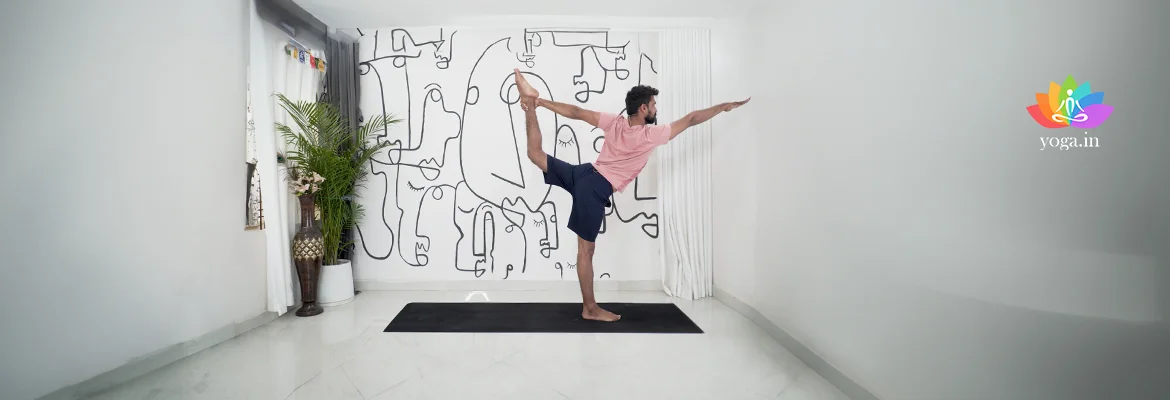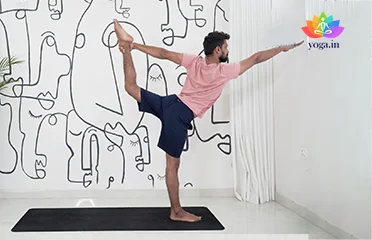Get into the position of Tadasana with your weight equally distributed on both feet.
Introduction to the Asana
The Sanskrit name is derived from Nata (नट) meaning dance, Raja (राजा)) means king and asana (आसन) meaning posture or seat.
Step to get in the pose
-
-
Lift your right arm to the ceiling.
-
Now, grab the outside of your left foot with your left hand and bring it to the buttock as you exhale.
-
Tighten your right hip and flex your right thigh and knee to make the standing leg powerful.
-
Try to elevate the leg higher and deepen the backbend.
-
Bring your right arm up in front, parallel to the floor.
-
Gaze at any one point.
-
Hold the position for 1-10 breaths and come back to Tadasana.
-
Repeat on the other side.
Common mistakes and pitfalls
-
The knee should be slightly soft, not locked, hyperextended, or overly bent.
-
Not aligning your hips and knees.
Benefits
-
Strengthens your neck, shoulder, back, arms, knees, legs and abdominal muscles.
-
Develops more flexibility in your hamstrings, spine and shoulders.
-
Strengthens and stretches your thigh and lower back.
-
Aids in weight loss as metabolism is boosted.
-
Regulates the digestive system.
-
Enhances body balance and coordination.
-
Relaxes the mind, reduces stress, and improves concentration.
Contraindication
-
Avoid in case of lower back pain or neck injuries
-
Avoid if suffering from asthma, hypertension, or heart issues.
-
Avoid in case of a recent abdominal surgery.
-
Avoid if suffering from a slipped disc, sciatica, or arthritis.
-
Avoid in pregnancy, postnatal care and menstruation.
-
Avoid if you lack a body-breath connection.
-
Avoid if you are undergoing depression, dizziness, vertigo, migraine or insomnia issues.




